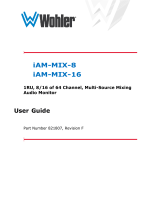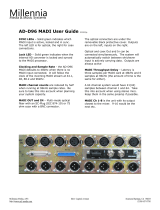
Page3
TABLE OF CONTENTS
Contents
User Guide ........................................................................................ 1
TABLE OF CONTENTS .......................................................................... 3
Contents ....................................................................................................... 3
CHAPTER 1: Installation ....................................................................... 5
Introduction .................................................................................................. 5
Overview ............................................................................................ 5
Safety .......................................................................................................... 5
Instructions ......................................................................................... 5
Safety Symbols .................................................................................... 6
Mounting ............................................................................................. 6
Heat Dissipation ................................................................................... 7
Sympathetic Vibration ........................................................................... 7
Mechanical Bracing ............................................................................... 7
Electrical Interference ........................................................................... 7
Power ................................................................................................. 7
Compliance ................................................................................................... 8
FCC .................................................................................................... 8
ICES-003 ............................................................................................ 8
CHAPTER 2: Local Operation ................................................................. 9
Startup ......................................................................................................... 9
Front Panel .................................................................................................... 9
Rear Panel ................................................................................................... 11
Channel Displays .......................................................................................... 14
Preset / Config Menu .................................................................................... 14
Preset Selection ................................................................................. 15
Current Version .................................................................................. 15
Current IP Address ............................................................................. 15
Reset IP Address ................................................................................ 15
Loading Presets from Another iAM-MIX .................................................. 16
Setting DHCP or a Static IP Address ...................................................... 16
CHAPTER 3:
Technical Info ............................................................... 17
Web Browser / Control Device ........................................................................ 20
First Time- IP Assignments ............................................................................ 20
Peer-to-Peer Connection ...................................................................... 20
Network Connection ............................................................................ 21
Dashboard .................................................................................................. 22
Sign In ....................................................................................................... 23























